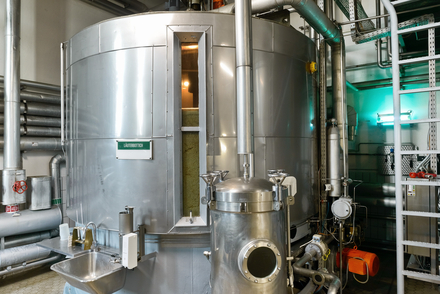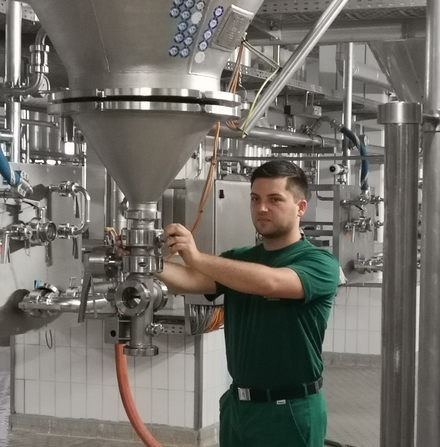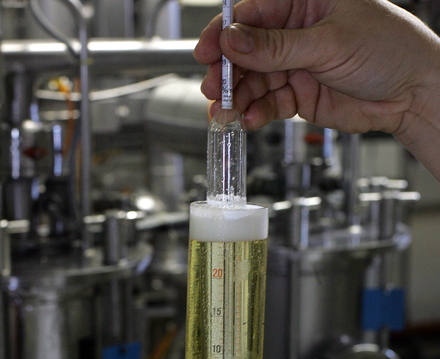
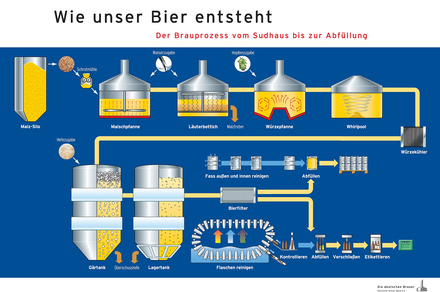
This is how we brew our beer
While you’re enjoying your glass of fresh Mauritius beer, you’re probably not aware of the fact that brewing is a real art.
A multitude of materials and machinery is needed. Boiling, cooling, stirring, fermenting, decanting and bottling are all part of the process.
We leave nothing to chance when it comes to the quality of our beers. Our quality management team closely monitors the compliance with internationally recognised quality standards during every step of the production process
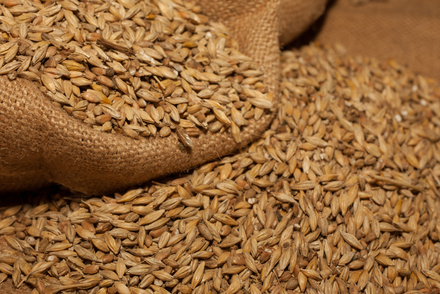
The malting process
The foundation for the colour and taste of the beer is already laid in the malting plant: this is where the appropriate grain is selected. The grains are soaked in water and begin to germinate. During this process, the insoluble starch in the grains is made accessible for the brewing process. The green malt that results is kilned (dried) and depending on the temperature, either lighter or darker malts are obtained.
Daily, up to three lorries deliver approximately 26 to 28 tonnes of quality brewing malt from the region. That adds up to approximately 270 lorries. Our malt is stored in six malt silos with a storage capacity of 23 tonnes each for a total of 138 tonnes.
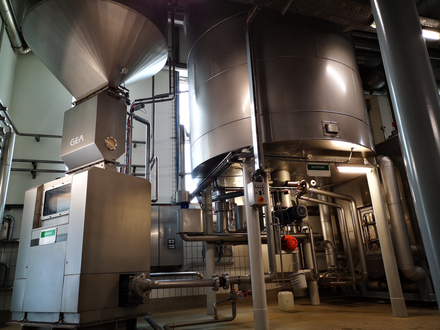
The mashing process
The crushed malt is mixed with brew water in the mash tun. The mash is then heated to various temperatures, which cause the enzymes in the malt kernels to transform the water-soluble starch of the grain into soluble malt sugars. At this point, all the malt’s substances essential for brewing turn into a solution. The mash now consists of a watery mixture of dissolved and undissolved substances. These are then completely separated from one another during the straining process. This liquid is called wort. The residual sugar is rinsed with hot water. What remains is the so-called draff. This is in high demand by our regional farmers, since the draff contains many valuable nutritional substances and is considered excellent livestock feed.
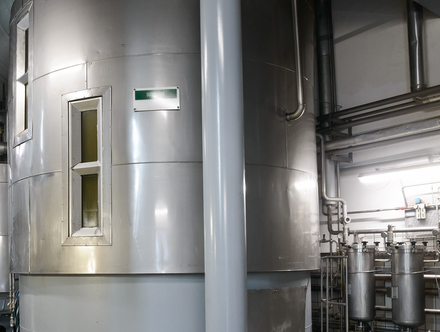
The wort boiling process
Now the wort is boiled in the wort kettle. The flavour of the hops is released at boiling temperature. It gives our beers their typical character and significantly determines the flavour. The original wort content is set by evaporating water. This is the basis for the aroma, taste and alcohol content. The “trub”, a mixture of hops and protein/tannin compounds that is formed during boiling, has to be separated from the wort before the fermentation process. Through rotational currents in the whirlpool vessel, the fine particles together with the trub settle in the middle. The heavy components of the trub sink to the bottom of the vessel. The beer wort now gets cooled down to 14 degrees.
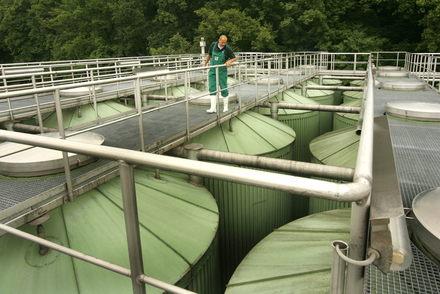
The fermentation process
For the fermentation process, the wort is mixed with yeast. Yeast is responsible for the alcoholic fermentation. For this, it needs oxygen; the cold wort is aerated intensively. During this process, the yeast converts the malt sugar in the beer wort into carbon dioxide and alcohol. The fermentation takes approximately seven days. At the end of the fermentation process in the fermentation brewing tank, the bottom-fermented yeast settles in the cone of the tank. This is called green beer. The full flavour is matured in the storage tank. At our private brewery, we have 24 refrigerated and insulated fermentation and storage tanks in which the beer is fermented and stored. The 14.5m high tanks have a capacity of 135,000 litres.
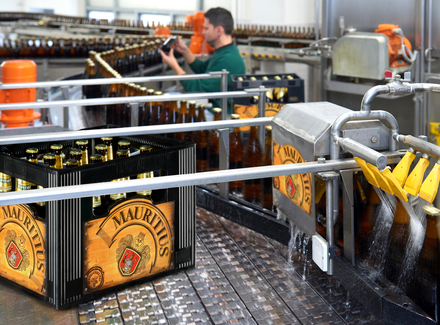
The bottling process
After filtration, the beer can be filled into kegs, bottles or cans. Approximately 30,000 returnable bottles can be filled per hour.
Immediately after filling, the bottles are labelled and sealed using crown caps. Once the final control has been done, the cases are packed automatically before they make their way into distribution on pallets.
Mauritius’s kegs are filled using gauged ale counters. 60 kegs at 50l per keg for a total of 3000l can be filled per hour.
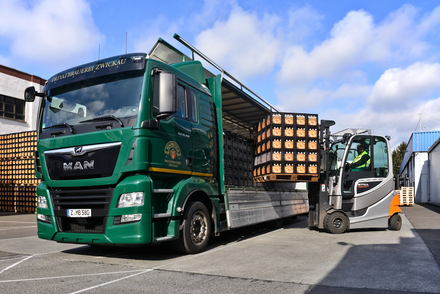
Logistics
Before the beer is poured into your glasses, it leaves our brewery in lorries. Things can get pretty hectic in our logistics department; our beers are in demand all over, not just in Zwickau. In order to satisfy the demand for our beer as quickly as possible, our logistics department needs to be fast on their feet when loading and unloading. Finally, the freshly-brewed Mauritius beer leaves our brewery and is on its direct way to our retailers without long storage times.


![[Translate to Englisch:] Mauritius: Brauerei: Brauprozess [Translate to Englisch:] Mauritius: Brauerei: Brauprozess](https://www.mauritius-brauerei.de/fileadmin/_processed_/2/e/csm_Mauritius_Brauerei_Brauproszess_7635e414e7.jpg)
![[Translate to Englisch:] Mauritius: Brauerei: Brauprozess [Translate to Englisch:] Mauritius: Brauerei: Brauprozess](https://www.mauritius-brauerei.de/fileadmin/_processed_/1/3/csm_Mauritius_Brauerei_Brauprozess_Lagertank_2_7f3bb7147a.jpg)
![[Translate to Englisch:] Mauritius: Brauerei: Brauprozess [Translate to Englisch:] Mauritius: Brauerei: Brauprozess](https://www.mauritius-brauerei.de/fileadmin/_processed_/d/2/csm_Mauritius_2_2a5ac1ba79.jpg)
![[Translate to Englisch:] Mauritius: Brauerei: Brauprozess [Translate to Englisch:] Mauritius: Brauerei: Brauprozess](https://www.mauritius-brauerei.de/fileadmin/_processed_/2/2/csm_Mauritius_Brauerei_Brauprozess_15acab9e88.jpg)
![[Translate to Englisch:] Mauritius: Brauerei: Brauprozess [Translate to Englisch:] Mauritius: Brauerei: Brauprozess](https://www.mauritius-brauerei.de/fileadmin/_processed_/9/8/csm_Mauritius_Brauerei_Brauprozess_Stapler_d090461d15.jpg)

